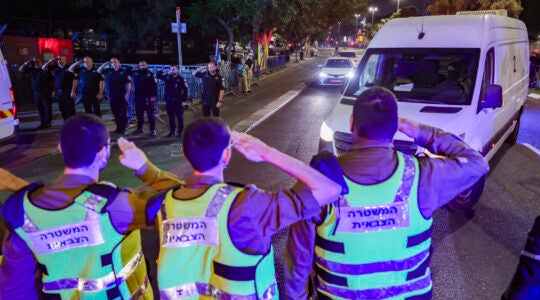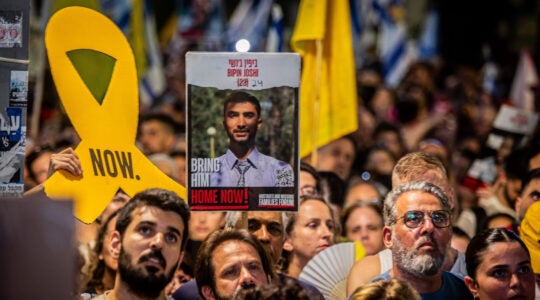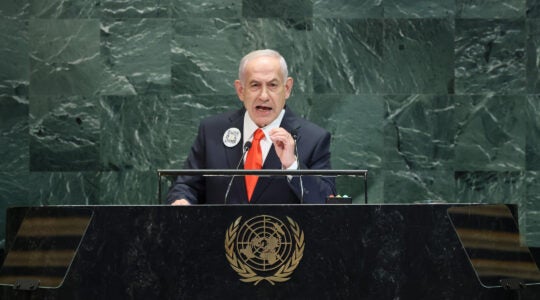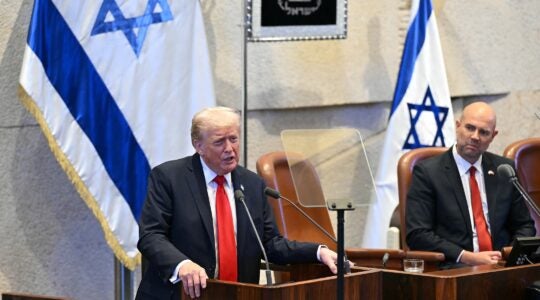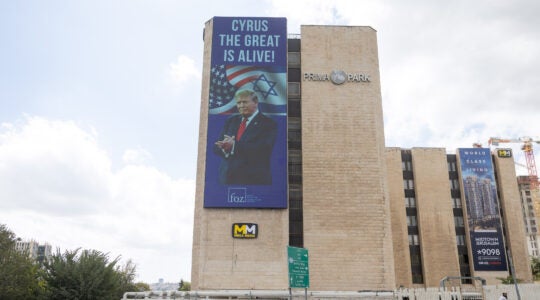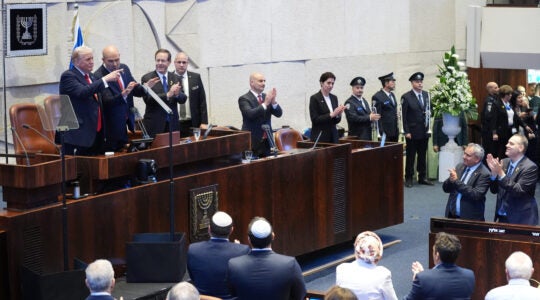
U.S. Sen. Chris Dodd, seen here in a July 29, 2009 photo chairing a Foreign Relations committee hearing, is examining proposals to broaden sanctions against Iran as the chairman of the U.S. Senate Banking Committee. (Office of Senator Chris Dodd)
WASHINGTON (JTA) — After years of equivocating in the international community over whether Iran is close to developing a nuclear weapon, a flurry of activity in recent weeks suggests an answer and a consequence: Iran is close, and better stop, or else.
Here is a time line of recent revelations about Iran’s nuclear program:
Sept. 21: Iran informs the U.N. nuclear watchdog, the International Atomic Energy Agency, that it is maintaining a second uranium enrichment plant underground near the holy city of Qom. Dissidents revealed its first nuclear facility, Natanz, in 2003. Iran insists both plants are for civilian use. Talks between Iran, the United States and other major powers are to start on Oct. 1; Iran continues to insist that its nuclear research is not on the agenda throughout the week, during U.N. General Assembly proceedings.
Sept. 25: In a dramatic news conference at the G-20 industrial summit in Pittsburgh, President Obama joins with French President Nicolas Sarkozy and British Prime Minister Gordon Brown to reveal the existence of the Qom reactor; the IAEA had kept Iran’s letter a secret. Despite Iran’s denials, Western officials say that the dimensions of the new enrichment plan suggest a military component, as does its control by the Iranian Revolutionary Guard Corps. Sarkozy says new sanctions may kick in as soon as December. Russia warns that sanctions may be inevitable and China presses Iran to cooperate with IAEA inspectors. Both nations, veto-wielding members of the U.N. Security Council and major traders with Iran, until now have resisted further sanctions.
The same day, the speaker of the U.S. House of Representatives, Rep. Nancy Pelosi (D-Calif.) and U.S. Rep. Howard Berman (D-Calif.), the chairman of the Foreign Relations Committee, release statements that in light of the Qom revelation, they will advance sanctions targeting the export to Iran of refined petroleum. Iran, a major oil exporter, nonetheless exports up to 40 percent of its gasoline — a key prop to its ailing economy.
Sept. 28: Iran tests mid-range missiles capable of reaching Israel, parts of Europe, the former Soviet Union and U.S. forces in the region. The tests have been long planned, but the revelation of the Qom enrichment plant spurs concerns about a nuclear weapons delivery system. A senior Iranian Revolutionary Guard Corps official explicitly warns that the missiles can hit Israel.
Oct. 1: Iranian representatives meet with major powers — including China, Russia, the United States, France, Britain and Germany — in Geneva. The Iranians agree to allow IAEA inspectors to visit the Qom enrichment plan within two weeks and to ship the uranium it has already enriched to low grades to Russia and France for enrichment to medical-use levels.
Oct. 4: IAEA chief Mohammed ElBaradei visits Iran and commends the country for shifting from confrontation to transparency. He says the Qom inspection will take place Oct. 25.
Oct. 6 — Iranian officials announce plans to install advanced centrifuges at Qom; sanctions advocates say this undercuts earlier claims that the site is strictly for civilian use.
The same day, Sen. Christopher Dodd (D-Conn.), the chairman of the U.S. Senate’s Banking Committee and a key Obama ally, holds a hearing on Iran sanctions to outline his plans to consolidate Iran sanctions bills — including one similar to the House plan targeting exports of refined petroleum to Iran — into a single sanctions omnibus.
JTA has documented Jewish history in real-time for over a century. Keep our journalism strong by joining us in supporting independent, award-winning reporting.
